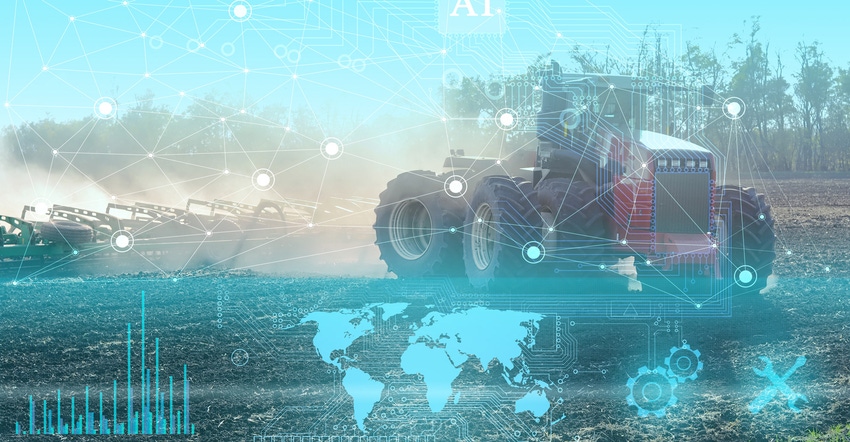April 22, 2021

When a company has been involved in a range of ag technology systems that have advanced guidance, control, and record-keeping — where next? For Trimble, it’s a new alliance to help advance technology in machine perception.
“One of the things that is quite important is awareness of what is happening around us when operating a machine,” says Guillermo Perez-Iturbe, marketing director, agriculture, Trimble.
Perez-Iturbe is referring to the news that Trimble is partnering with VayaVision on new systems to enhance what a machine can “see” when in operation. The two companies will be working on advanced software to make information coming from current sensors useful in automatic equipment.
Today’s equipment is sensor-filled. Add in more advanced perception systems including radar, lidar (a sensing method that sends laser light pulses to determine presence, shape and distance of objects) and visual cameras; and while that’s all useful information, it’s a lot of data to crunch.
“One of the main problems with a lot of sensors is combining them and determining the right information to use at any given time,” observes Ulrich Vollath, Trimble Fellow, autonomous technologies, Trimble. “And that can depend on the workflows of the current situation — is it plain sunshine? Is it raining? Is it dusty, which we see a lot of in agriculture?”
It's those harsh conditions that can challenge perceptions systems, reducing reliability. But Vollath and Perez-Iturbe explain the VayaVision relationship brings advanced software that can help overcome those challenges.
Vollath adds that VayaVision already has proven systems that work in the on-road market, which are now coming to the off-road world of agriculture, construction and mining. “This is a big-time advantage for us to hit the ground running,” he adds. “Our main task is to adapt those systems for off-road use.”
And while this gets a little tech-geek-specific, he adds that VayaVision software does its work on the front end, which means the processing power and the perception tools work under lower load. For example, Vollath explains with this approach, a megapixel color camera, combined with a less expensive lidar three-dimensional sensor, can be used to achieve the same result if the processing were done at the “end” of the perception process using more expensive sensors.
For farmers, that means lower-cost tools get the same job done, which should reduce the cost of bringing autonomy to market.
The value of autonomy
Many farmers may forget that it was Trimble that developed the Connected Farm concept of sharing data from machine to cloud, and providing early remote display access. It has long provided guidance and even autonomous use of machines like scrapers for land leveling. Where does autonomy go for ag?
“Whatever you bring to autonomy will be based on the value you provide,” Vollath says. “We’re going back to the original problem — clearly we’re talking about saving time, saving inputs and working to get support for less skilled operators in machines in order to achieve skilled operator results."
That last piece — the skilled operator — is a solid challenge, but as more tasks are automated, it reduces the training needed to run specific machines, even in complex jobs. “We want to make the machine safer,” Vollath adds.
Perez-Iturbe adds that Trimble has a long history of working with major original equipment manufacturers in many industries, providing the tech tools needed for guidance and machine operation. This latest alliance builds on that history.
The key developments possible with the alliance include:
• improving operational efficiency, decreasing labor costs and reducing project timelines
• helping customers scale automation efforts, from driver assistance features to fully autonomous solutions
• offering a flexible, customer-centric approach to product engineering and implementation
• reducing customer development costs and accelerating time to market with machine automation
• augmenting or replacing human control to create a safer work environment through path optimization, obstacle avoidance and situational awareness
• improving sustainability by optimizing vehicle functionality and utilization with automation to reduce idle time, fuel consumption and environmental impact.
Learn more at trimble.com.
About the Author(s)
You May Also Like






